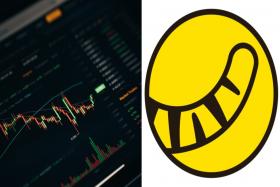S&P Global Ratings: Hyflux default may be first of such cases
S&P says lending conditions will become less favourable due to slowdown
S&P Global Ratings said the default of troubled water and power company Hyflux could be the "first wagon in a train of financial distress cases" to come in Singapore, as lending conditions adjust to the economic slowdown and become less favourable.
The credit ratings agency also noted in its report dated April 8 that the credit horizon for the Singapore dollar bond market could be cloudy over the next 12 to 18 months.
"We believe more defaults could occur in Singapore as earnings may be slowing down and investors are becoming more selective," said S&P Global Ratings credit analyst Bertrand Jabouley.
"Due to very low rates and yields in the past five years, Singapore investors, both institutional and retail, have sometimes opted for riskier bonds to increase cash returns.
"Lending appetite driven by abundant liquidity has allowed less-established, often smaller companies to tap the market. Such players are typically more vulnerable to economic ups and downs," said S&P.
Given that the global trading environment may not be as supportive as it used to be, a marked slowdown of earnings looks increasingly plausible, it added.
Mr Jabouley said an earnings slowdown could be an issue for Singapore issuers, which have a median leverage of close to six times.
He noted companies with the highest default risks would typically be small, probably without access to diversified sources of funding, operate in more volatile activities such as property development or commodities, have sizeable short-term debt maturities relative to Ebitda (earnings before interest, tax, depreciation and amortisation), and a debt/Ebitda exceeding five times.
Hyflux recently announced it would restructure its outstanding bonds, and S&P is of the view that more distress situations are likely to appear in Singapore, as more cautious investor sentiment may exacerbate refinancing risk.
By S&P's estimates, close to $4 billion of Singdollar corporate bonds are maturing by the end of this year. That number climbs to US$10 billion (S$13.5 billion) next year, S&P said.
Separately, the credit ratings agency also highlighted four key takeaways from the Hyflux fiasco.
First, no sector is immune to financial troubles. Distressed situations in Singapore over the past two to three years have been confined to the energy and commodity sectors following volatile prices, S&P noted.
"However, the default of telecoms service provider PT Trikomsel Oke Tbk in 2015 highlights that even companies in defensive sectors, widely understood as having sound resilience and growth potential, are vulnerable to financial distress and default risk if they rely heavily on debt for their expansion, and do not appropriately manage their liquidity."
Second, situations can evolve quickly for companies with narrow or uncertain earnings quality, S&P said. This means lenders should do their due diligence before, and monitor their money after investing.
Third, losses can be harsh depending on the characteristics of debt instruments outstanding. This is because the market has seen the introduction of complex debt instruments compared with senior unsecured notes, S&P said.
Lastly, S&P also noted that investors should not make assumptions regarding a private company's importance to the government, and hence regard a bailout as likely.
On April 1, Parliament announced that taxpayers' money would not be used to alleviate the financial burden on Hyflux.
"This means while water security is an important theme in Singapore, making Hyflux's role important to the country, it may not suffice to engender government support, in the absence of a strong link, that is, ownership," S&P said. - THE STRAITS TIMES
Get The New Paper on your phone with the free TNP app. Download from the Apple App Store or Google Play Store now


